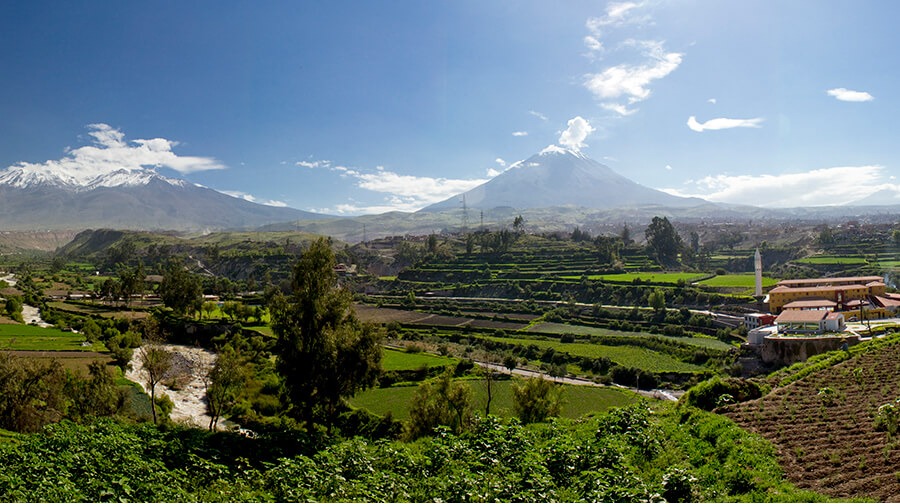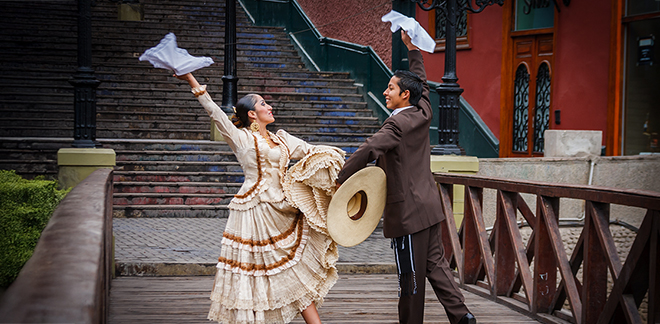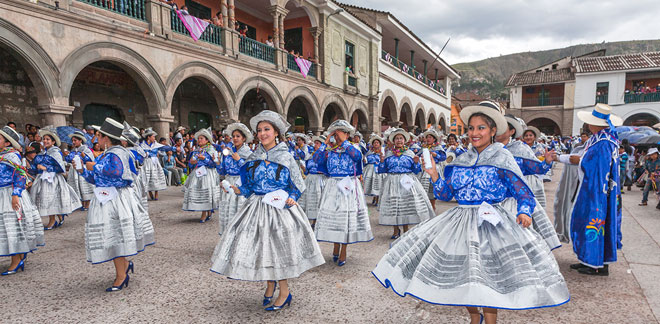Arequipa: five reasons to fall in love with this destination
Síguenos en:Google News
Located in the south of Peru, Arequipa is one of the most visited regions in the country. Its beautiful landscapes, surrounded by imposing volcanoes such as the Misti, snow-capped mountains, and deep canyons; the great architectural beauty of its capital; and its exquisite cuisine (considered one of the best in South America by the international channel CNN in 2018), have made this destination a favorite of Peruvian and foreign tourists.
Nestled between the coast and the southern mountains of Peru up to the Andes, Arequipa is a place not to be missed. If you're still not convinced, here are five places that will blow you away.
Historical Center
Owing to its colonial architecture, the Historic Center of Arequipa was declared a Cultural World Heritage Site by UNESCO in the year 2000. Among its main attractions are Plaza de Armas and the Monastery of Santa Catalina. The latter is a small walled citadel made from white and pink sillar (volcanic stone), where we find narrow alleys and passageways surrounded by arches that lead to splendid courtyards, cloisters, gardens, small squares and old buildings, typical of colonial architecture.
The Compañía de Jesús church can also be found near Plaza de Armas and, according to experts, it is the most beautiful architectural complex in the city. Inside the church, canvases from the Cusco school are displayed and there is a pulpit carved in wood. Another attraction of the historical center is its cathedral, considered to be one of the most important 17th century religious monuments in Arequipa. It has a neoclassical architectural style and is built from sillar stone.
Sabandía
A place characterized by its rural landscapes and crystal clear waters that come from nearby volcanoes such as Misti, Chachani and Pichu Pichu.
One of the main attractions of this district is its mill, which was built in 1785 and epitomizes the typical architecture of the region, in which the use of sillar was predominant. For centuries, it supplied flour to the city and, thanks to restoration work, it preserves its sillar walls, vaults, gargoyles, and balconies.
Colca
In Chivay, you will find the Colca Valley, home to one of the deepest canyons in the world. Here you can practice sports such as canoeing, mountaineering, mountain climbing and trekking, among others. One of the great attractions of this destination is the Mirador de la Cruz, where the flights of the condor are widely anticipated; it is advisable to arrive very early in the morning to be able to appreciate the flights of this majestic bird.
Mollendo
In the Arequipa province of Islay, Mollendo is a town of beautiful spas, with easily accessible beaches and calm waters. Catarindo, Sombrero Grande, Playa 1, Playa 2, and Playa 3 are some of the most visited beaches, and camping is permitted on Playa 3. It also has a water park with 15 slides.
The houses made of pine wood are another of Mollendo's attractions, as is the Chiribaya Museum, which exhibits pieces of pottery and textiles from the Chiribaya culture, which settled in various places in the Tambo Valley. Its influence reached as far as the present border with Chile.
Mejía Lagoons
One of the Peru’s important protected areas can also be found in Islay: the Lagunas de Mejía National Sanctuary. This is the only sanctuary on the Peruvian coast for migratory birds from other continents, and is also home to several endangered species.
It is made up of a group of lagoons located near the mouth of the Tambo River. The water that collects in these lagoons comes from the filtrations in the Iberia and La Ensenada irrigations, located in adjacent higher lying areas. In addition, there are ecosystems such as wetlands, salt marshes, reed beds, lagoons, grasslands and sandy beaches.
Sources: Andina/ El Comercio/ enperu.org








